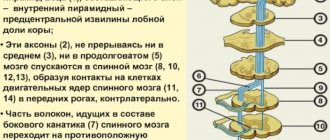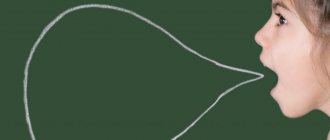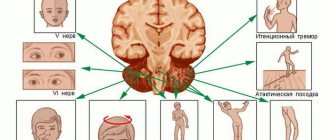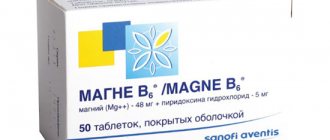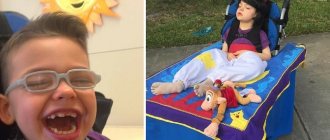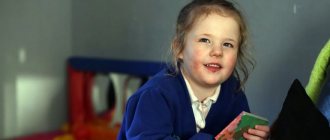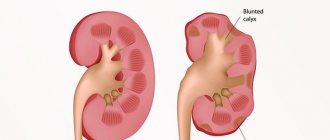Cerebral insufficiency: modern aspects of diagnosis and therapy
Residual cerebral organic insufficiency (RCON) is a pathology that is the result of abnormalities in the child’s nervous system that developed either in the womb or after birth.
This is due to damage to certain areas of the brain, which, in turn, is expressed in symptoms that complicate the child’s socialization process and limit his physical capabilities.
Diagnostic examinations of a child with suspected cerebral insufficiency should be aimed at determining the nature and etiology of the abnormality.
In this case, the following clinical research methods are used:
- Electroencephalography of the brain. This is a sensitive method for studying the functioning of the brain based on the study of electrical impulses that emanate from individual areas of the brain. The procedure is characterized by an almost complete absence of contraindications.
- Echoencephalography. The brain is examined using sound waves that are reflected from the surfaces of the meninges, skull bones, and soft coverings of the head. Thanks to this procedure, it is possible to identify pathological changes or processes in the structure of the brain.
- Rheoencephalography of cerebral vessels. The procedure allows you to assess the state of blood circulation and the quality of blood flow through the main vessels.
Of course, in addition to the listed diagnostic methods, the child needs to be examined by an experienced neurologist.
Once the diagnosis is determined, the specialist will prescribe adequate treatment. Its complex includes the following events:
- Drug therapy. In this case, it is indicated to take amino acids (in particular, glycine, lecithin, folic and glutamic acids), hepatoprotectors, antispasmodics, as well as indirect antihypoxants - substances that help saturate the body with oxygen and reduce the need for it. In addition, in case of RCN, nootropic drugs are taken, which have a neurotrophic and neuroprotective effect directly on the central nervous system. Thanks to this, tissue metabolic processes are normalized.
- Vitamin therapy. Particular emphasis is placed on vitamins B6 and B11.
- Transcranial micropolarization. This procedure has a therapeutic effect on the nerve cells of the brain. This happens due to the use of direct current of minimal strength. The benefit of the procedure is that the development of nervous tissue is stimulated and new connections between cells are created. When performing transcranial micropolarization, a special cap with wires is put on the child’s head. The procedure does not cause any discomfort;
- Therapeutic massage, the technique of which is suitable for correcting disorders of the central nervous system. It helps improve blood circulation, strengthens muscles, helps restore nerve tissue and generally improves the child’s vitality.
- Gentle manual therapy techniques. They improve the passage of nerve impulses, stimulate blood circulation, stabilize the patient’s emotional state and help eliminate the effects of stress. The required therapy program is determined by a specialist.
- Swimming lessons may also be recommended for medicinal purposes.
Diagnostics
The examination of a child with signs of residual cerebral organic failure should be comprehensive. In addition, parents should remember that “RCON” is a diagnosis by a neurologist, which must be made in a timely manner, since the outcome of the disease directly depends on this.
It is possible to identify pathology during the following studies:
- Electroencephalography of the brain.
- Echoencephalography.
- Rheoencephalography of the brain.
Based on the diagnostic results, the doctor draws up the most effective therapeutic regimen.
As practice shows, to make a final diagnosis there are few positive clinical symptoms; it is recommended to conduct additional laboratory and instrumental examinations.
Among them are:
- measurement of intracranial pressure (with this pathology the indicator will be increased);
- echoencephalography;
- electroencephalogram (to determine convulsive readiness);
- ophthalmoscopy.
Peculiarities
The brain is reliably protected by the cranium from adverse environmental conditions. Being an organ regulating all physiological processes occurring in the body, it uses enormous amounts of nutrients. The brain weighs only 1-3% of the total human body weight (approximately 1,800 g).
That is, normal functioning of the brain will occur only if there is an adequate blood supply, with a large amount of nutrients, oxygen and a complete absence of substances toxic to humans. Plus, there must be a constant and adequate outflow of venous fluid.
Essence and etiology of RCN
A powerful system of self-regulation of cerebral blood flow ensures excellent adaptation to labile environmental conditions.
During hypoxia, which is caused, for example, by acute bleeding, the flow of biological fluid into the central nervous system remains normal. In these situations, a powerful compensatory reaction is activated to force the centralization of this system, which is aimed, first of all, at increasing the blood supply to the circle of Willis (cerebral) and, as a consequence, maintaining normal circulation in general.
When hypoglycemia occurs, the body dilates the blood vessels that supply the brain. Because of this, the supply of glucose to the organ increases. But metabolic acidosis leads to an increase in blood outflow in order to quickly remove metabolic products from it.
With significant brain damage or insufficiency of regulatory mechanisms, hypercompensatory reactions occur. This causes a disruption in the regulation of blood flow in the vessels that supply biological fluid to the cranial cavity. Under such conditions, this area is a closed trap for the brain.
Excessive blood filling of the cerebral vessels leads to hypersecretion of the choroid plexus of cerebrospinal fluid. As a result, compression of the brain occurs, edema develops, which leads to a disorder in the regulation of vital functions and the circulation of biological fluid in the vessels.
Traumatic compression of brain tissue, impaired blood supply, edema, increased pressure in the cranial cavity, changes in liquor dynamics (that is, circulation of cerebrospinal fluid) lead to significant disorders of the central nervous system. This is manifested, first of all, by clouding of consciousness.
Residual cerebroorganic insufficiency (RCI) is considered as residual manifestations arising from damage to the central nervous system. This can occur during the perinatal (peripartum), childbirth, or infancy period.
Official medicine cannot provide an absolutely accurate substantiation of the causes of such a pathology as cerebral insufficiency.
However, risk factors have been identified that increase the risk of developing RCN. These include:
- late pregnancy (woman’s age – 40 years or more);
- infection of the expectant mother with one or another virus (especially if this happened in the first trimester, when the developing fetus is most vulnerable);
- living of a pregnant woman in unfavorable environmental conditions;
- a pregnant woman being in a state of constant stress or depression;
- heavy physical labor during pregnancy;
- attempts to terminate pregnancy;
- premature birth;
- the expectant mother abuses alcohol, takes drugs, smokes;
- placental abruption, which provokes impaired cerebral circulation and oxygen starvation of the fetus;
- injury to the child during childbirth;
- head injuries received by the child after birth;
- introduction of a drug into the mother’s body for the effect of anesthesia during surgical interventions, including during caesarean section;
- immunological incompatibility between the mother and the child she is carrying.
Cerebral insufficiency syndrome can also manifest itself as a hereditary pathology.
A pediatric neurologist can diagnose such a deviation. If you do not start treating a child at an early age, the pathology will progress and the severity of symptoms will become more pronounced. Dealing with RCN is not easy. The child will need not only medical help, but also support from parents, teachers, and psychologists.
Cerebral insufficiency: symptoms, treatment, rehabilitation
Cerebral insufficiency (CI) is currently considered as a set of syndromes resulting from acute dysfunction of the central nervous system, usually caused by cerebral ischemia or swelling. This concept has its own semantics, both clinical and pathophysiological, which is used to describe disorders and impairments during various periods of stroke.
Peculiarities
The brain is reliably protected by the cranium from adverse environmental conditions. Being an organ regulating all physiological processes occurring in the body, it uses enormous amounts of nutrients.
The brain weighs only 1-3% of the total human body weight (approximately 1,800 g). But for it to work well, 15% of the total blood volume (about 800 ml) must constantly flow through the vessels feeding the organ.
It metabolizes up to 100 g of glucose per day.
That is, normal functioning of the brain will occur only if there is an adequate blood supply, with a large amount of nutrients, oxygen and a complete absence of substances toxic to humans. Plus, there must be a constant and adequate outflow of venous fluid.
A powerful system of self-regulation of cerebral blood flow ensures excellent adaptation to labile environmental conditions.
During hypoxia, which is caused, for example, by acute bleeding, the flow of biological fluid into the central nervous system remains normal. In these situations, a powerful compensatory reaction is activated to force the centralization of this system, which is aimed, first of all, at increasing the blood supply to the circle of Willis (cerebral) and, as a consequence, maintaining normal circulation in general.
When hypoglycemia occurs, the body dilates the blood vessels that supply the brain. Because of this, the supply of glucose to the organ increases. But metabolic acidosis leads to an increase in blood outflow in order to quickly remove metabolic products from it.
With significant brain damage or insufficiency of regulatory mechanisms, hypercompensatory reactions occur. This causes a disruption in the regulation of blood flow in the vessels that supply biological fluid to the cranial cavity.
Under such conditions, this area is a closed trap for the brain. Thus, even the slightest increase in the contents of the cranial cavity by at least 5% leads to profound disturbances in consciousness and the regulation of higher nervous activity.
Excessive blood filling of the cerebral vessels leads to hypersecretion of the choroid plexus of cerebrospinal fluid. As a result, compression of the brain occurs, edema develops, which leads to a disorder in the regulation of vital functions and the circulation of biological fluid in the vessels.
Traumatic compression of brain tissue, impaired blood supply, edema, increased pressure in the cranial cavity, changes in liquor dynamics (that is, circulation of cerebrospinal fluid) lead to significant disorders of the central nervous system. This is manifested, first of all, by clouding of consciousness.
Pediatric cerebral insufficiency
Causes of the disease in children:
- placental abruption, which eventually leads to intrauterine fetal hypoxia;
- severe infectious diseases during pregnancy certainly affect the normal development of the embryo;
- psycho-emotional overload of the mother;
- unfavorable environmental situation in the country;
- unbalanced diet;
- bad habits;
- infectious diseases in childhood;
- influence of radiation (ionizing radiation);
- hemolytic disease of newborns;
- anesthesia, which is mandatory for caesarean section;
- intrapartum trauma;
- traumatic brain injury;
- sedentary lifestyle and physical inactivity;
- premature birth.
Pathogenesis
The main pathogenetic factors in the development of this pathology include:
- intrapartum trauma;
- intrauterine infections;
- hypoxia during the intrapartum period.
Since the thinking organ needs a large amount of oxygen, a slight deficiency can cause massive damage to the nervous tissue. The consequences of intra- and perinatal pathology may be delayed cerebral edema. As well as vegetative-vascular dystonia and cerebral insufficiency. The latter, in fact, is also a delayed manifestation of organic brain damage.
Clinical symptoms of residual cerebral insufficiency in children
With this disorder, various conditions can be observed. Astheno-vegetative syndrome is manifested by the following clinical symptoms:
- fast fatiguability;
- lethargy;
- drowsiness;
- weakness;
- headache.
Nervous tics:
- The patient experiences involuntary movements.
Violation of autonomic regulation:
- excessive sweating due to a malfunction of the sweat glands of the feet and palms;
- disturbances in the regulation of blood flow in the terminal sections of the cardiovascular system.
Weather dependence (i.e. strong dependence of a person’s physical condition on weather conditions and time of year):
- possible loss of consciousness;
- tachycardia (acceleration of heartbeat);
- change in blood pressure.
Vestibular disorders:
- nausea, which in extreme cases leads to vomiting;
- motion sickness in transport and on swings.
Lability of the human psycho-emotional sphere:
- mild irritability;
- lability of mood (frequent changes);
- capriciousness.
Photophobia (intolerance to bright light).
Motor activity disorders. As a rule, it manifests itself in two contradictory syndromes. The first arises as a result of the predominance of inhibition processes in the brain. The second is a consequence of excessive activation, which leads to inadequate functioning of the structures responsible for maintaining attention (these are structures such as the thalamus).
Also, with residual organic cerebral insufficiency, inhibition is characteristic:
- it is difficult to motivate such children to do any work;
- if they do agree to complete tasks, they do it very slowly;
- They have difficulty switching between different tasks at the same time.
Or hyperactivity:
- children experience great difficulty maintaining attention;
- They are characterized by strong restlessness, even to the point of ADHD (attention deficit hyperactivity disorder).
Diagnostics
As practice shows, to make a final diagnosis there are few positive clinical symptoms; it is recommended to conduct additional laboratory and instrumental examinations.
Among them are:
- measurement of intracranial pressure (with this pathology the indicator will be increased);
- echoencephalography;
- electroencephalogram (to determine convulsive readiness);
- ophthalmoscopy.
What is characteristic
Most children who receive this diagnosis have abnormalities that are visible to the naked eye:
- irregular head shape;
- absence or deformation of ears and teeth;
- abnormally large distance between the eyes;
- prognathism.
The following treatment regimens are the result of many years of world practice in the treatment of this type of pathology.
According to modern protocols, treatment of cerebral insufficiency should be carried out in two main directions. This is a general strengthening therapy and a local effect on pathologies directly in the brain.
Such treatment for chronic and acute cerebral insufficiency syndrome includes:
- normalization of hemodynamics;
- restoration of normal respiratory activity;
- normalization of metabolic processes;
- local effect on pathology:
- restoration of normal functioning of the BBB (blood-brain barrier);
- increased hemodynamics in the brain;
- treatment of edema.
According to modern standards, the main treatment for cerebral edema is the administration of the following drugs:
- osmodiuretics;
- saluretics;
- glucocorticoids.
As practice shows, taking one of the above groups of drugs in monotherapy does not provide a significant clinical effect, so treatment must be combined.
Also, the use of bioflavonoids at the prehospital stage greatly increases the effectiveness of further therapy, since they influence a significant number of links in the pathobiochemical process of the development of this pathology.
The following drugs are widely used in modern clinical practice:
- “Troxevasin”;
- “Venoruton”;
- “Corvitin”;
- “Escuzan”;
- “L-lysine aescinate.”
To improve the rheological properties of blood in the cerebral circle, patients are recommended to take anticoagulants under the control of the prothrombin index. This group of drugs is especially effective for cerebral insufficiency, which arises as a result of impaired venous outflow.
Infusion therapy is mandatory when this pathology occurs due to an acute decrease in circulating blood volume. In a situation where the cause of the disease is acute intoxication, detoxification therapy is considered a necessary measure. As a rule, the following solutions are used for these purposes:
- “Trisol”;
- “Reosorbilakt”;
- “Acesol.”
Rehabilitation
Treatment and rehabilitation after acute cerebral insufficiency must be individual, timely and necessarily comprehensive.
Such activities will be most effective only if the patient feels supported not only by medical staff, but also by his family and psychologists. This will help restore the former rhythm of life and performance in the shortest possible time, regardless of the severity of organic brain damage.
What is recommended
It is necessary to create social conditions in which the patient will feel as comfortable as possible. The following components must be included in the complex of rehabilitation measures:
- drug therapy;
- Exercise therapy (therapeutic physical culture);
- occupational therapy.
When diagnosing delayed complications of cerebral insufficiency, it is imperative to create living conditions in which the patient does not feel limited.
Rehabilitation in children is much easier and more effective due to their high level of regenerative processes and significant opportunities for neuroplasticity. Therefore, as a rule, they do not experience delayed complications.
Conclusion
Cerebral insufficiency is a complex disease and requires constant monitoring by specialists. Only comprehensive treatment can alleviate the patient’s condition and at least partially return him to his usual rhythm of life.
Source: https://FB.ru/article/454158/tserebralnaya-nedostatochnost-simptomyi-lechenie-reabilitatsiya
Manifestations of cerebral insufficiency in children
The clinical picture of RCN and its severity depend on the location of the affected area of the brain.
Residual cerebral insufficiency in children is expressed in the following symptoms:
- emotional instability, the child is overly irritable, capricious, his mood changes at lightning speed, parents often lose sight of this symptom, attributing it to characteristics of age.
- rapid fatigue, which occurs even with minor loads, including intellectual ones.
- The child grinds his teeth in his sleep and often wakes up.
- passivity, drowsiness, complaints of headaches and weakness;
- the child’s sensitivity to changes in weather conditions, that is, weather dependence; children experience surges in blood pressure, increased heart rate and even fainting;
- non-standard facial expressions: trembling of eyelids and lips, frequent blinking, twitching of shoulders;
- nervous tic;
- intolerance to noise, loud and harsh sounds, too bright light;
- intolerance to travel in any type of transport, the child feels nausea, even vomiting, lightheadedness;
- The extremities of a child diagnosed with RCON are often cold, no matter how warm it is indoors or outdoors, and the skin may acquire a marbled tint.
Separately, motor disorders should be noted as a clear symptom of cerebral insufficiency. They can be expressed either in inhibition, or, conversely, in impulsiveness and hyperactivity.
The first mentioned state manifests itself in passivity, slowness, and rapid fatigue, the second - in restlessness, excitability, and the need for active pastime. It is difficult to attract hyperactive children to quiet activities: even getting them to sleep is hard work.
You can suspect RCN in a school-age child if he cannot copy individual elements according to the provided model, or misses letters or entire syllables when reading.
In addition, there are also external signs of cerebral insufficiency in the child. This:
- the upper jaw is excessively pushed forward;
- skull deformations;
- wide-set eyes.
Children with RCN often become depressed, behave aggressively, and also throw tantrums. They have a poor appetite. Sometimes phenomena such as increased sweating, convulsions, and chills may be observed.
Characteristic symptoms
It should be noted that the disease has a number of symptoms indicating the occurrence of asthenia. At the same time, it is impossible to say unambiguously what manifestations of the disease will be in a particular person.
When diagnosing, the doctor will definitely ask about what complaints the patient has. Also taken into account will be those symptoms that last at least a month and do not disappear.
People often notice the following signs of illness:
- Feeling as if there is not enough air. It can occur periodically or be observed constantly. In any case, such a phenomenon cannot be considered normal; it requires mandatory diagnosis.
- Blood pressure surges. With the hypertensive type of disease, a person will often suffer from high blood pressure. At the same time, it can also decrease significantly, which will negatively affect overall well-being.
- Increased anxiety. It occurs in a person for no apparent reason, and may not go away even when there are no irritating factors. This is also a reason to visit a doctor.
- Problems with intellectual abilities. A person may notice that they have difficulty performing mental tasks that previously did not seem difficult.
- Pinching and aching pain in the chest. Often a person believes that he has problems with the heart muscle. In this case, in fact, there may be such a disease as asthenia.

It is worth noting that with neurocirculatory asthenia, a person quite often experiences pain of varying degrees, which differ in nature. However, they do not have a clear connection with food intake, or with physical activity. Often, painful sensations arise due to the fact that a person has suffered from emotional distress, is very overtired, and is also experiencing premenstrual syndrome.
Many patients note that their endurance has decreased due to the disease, and as a result, it becomes more difficult to cope with physical activity. The heat may be perceived worse, and nausea and vomiting may occur. Moreover, additional signs may include changes in vascular tone, as well as problems with thermoregulation. It is for this reason that people often go to the doctor with a complaint of fever, which does not have accompanying symptoms that explain its origin.
Approximately half of the patients suffer from vegetative-vascular crises. They note significant headaches, numbness of the limbs, tremors, constant fear, as well as increased body temperature and blood pressure. Such crises arise unexpectedly and end just as abruptly. At the same time, after them a person feels exhausted, but over time this feeling passes.

If a person notices symptoms of cardiac, mixed or any other type of disease, he should definitely visit a medical specialist. It is important to make an accurate diagnosis in a timely manner so that the correct treatment can be prescribed. To do this, you will definitely have to undergo a series of examinations, with the help of which you can check the condition of the internal organs and draw a conclusion.
Pediatric cerebral insufficiency
Causes of the disease in children:
- placental abruption, which eventually leads to intrauterine fetal hypoxia;
- severe infectious diseases during pregnancy certainly affect the normal development of the embryo;
- psycho-emotional overload of the mother;
- unfavorable environmental situation in the country;
- unbalanced diet;
- bad habits;
- infectious diseases in childhood;
- influence of radiation (ionizing radiation);
- hemolytic disease of newborns;
- anesthesia, which is mandatory for caesarean section;
- intrapartum trauma;
- traumatic brain injury;
- sedentary lifestyle and physical inactivity;
- premature birth.
Consequences of uncontrolled development of pathology
If cerebral insufficiency syndrome is not subjected to complex treatment, this may subsequently result in the following complications:
- slow development of the speech apparatus;
- difficulties in developing reading, writing, and counting skills;
- articulatory deviations;
- easily developing dependence on toxic substances and alcohol.
Due to the slow process of mastering speech skills, the child will experience communication difficulties, and due to behavioral deviations, it will not be easy for him to join the team. As a result, “provocateur” situations will arise that incline the child to depression and isolation.
Pathogenesis
The main pathogenetic factors in the development of this pathology include:
- intrapartum trauma;
- intrauterine infections;
- hypoxia during the intrapartum period.
Since the thinking organ needs a large amount of oxygen, a slight deficiency can cause massive damage to the nervous tissue. The consequences of intra- and perinatal pathology may be delayed cerebral edema. As well as vegetative-vascular dystonia and cerebral insufficiency. The latter, in fact, is also a delayed manifestation of organic brain damage.
The main causes and symptoms of dromomania
Dromomania is a mental disorder in which a person constantly feels the desire to run away from home. Patients with dromomania run away, as they say, “where.
Increased intracranial pressure - as a rule, to confirm this diagnosis, there is little analysis of clinical symptoms and additional diagnostics are required - echoencephalogram, electroencephalogram, as well as examination of the child’s fundus
Asthenic syndrome is characterized by fatigue, lethargy, drowsiness, general weakness, and headaches
Nervous tics or strange repetitive movements - frequent blinking, twitching of shoulders or lips, sniffling, constant straightening
Cold, damp extremities – arms and legs, sometimes “marbled” skin on them
Weather dependence is a strong reaction of the child’s body to the weather, expressed in fainting states, increased heart rate, decreased or increased blood pressure
Problems with the vestibular system - motion sickness in transport, on swings and attractions, feeling of nausea and lightheadedness, leading to vomiting
Unstable emotional background - irritability, frequent mood swings, moodiness and tearfulness
Intolerance to loud sounds and bright lights
Motor disorders, as a rule, are expressed by two opposite states - either inhibition and lethargy (such children are slow, “sway for a long time”, have difficulty getting involved in work, have difficulty switching attention from one object to another), or hyperactivity and impulsivity (hyperactivity is the inability to concentrate and maintain attention, instantaneous switching of attention to other objects, general inattention and absent-mindedness)
In the second - on the contrary, they are restless, fussy, active, excited, active
It is difficult to encourage them to read or engage in quiet activities, or to put them to sleep
A large number of children who are diagnosed with residual cerebral organic failure also have external deviations from the norm
deformation of the skull (dysplasia), teeth or ears
wide-set eyes (hypertelorism)
a strongly protruded upper jaw (prognathism), etc.
With this disorder, various conditions can be observed. Astheno-vegetative syndrome is manifested by the following clinical symptoms:
- fast fatiguability;
- lethargy;
- drowsiness;
- weakness;
- headache.
Nervous tics:
- The patient experiences involuntary movements.
Violation of autonomic regulation:
- excessive sweating due to a malfunction of the sweat glands of the feet and palms;
- disturbances in the regulation of blood flow in the terminal sections of the cardiovascular system.
Weather dependence (i.e. strong dependence of a person’s physical condition on weather conditions and time of year):
- possible loss of consciousness;
- tachycardia (acceleration of heartbeat);
- change in blood pressure.
Vestibular disorders:
- nausea, which in extreme cases leads to vomiting;
- motion sickness in transport and on swings.
Lability of the human psycho-emotional sphere:
- mild irritability;
- lability of mood (frequent changes);
- capriciousness.
Photophobia (intolerance to bright light).
Motor activity disorders. As a rule, it manifests itself in two contradictory syndromes. The first arises as a result of the predominance of inhibition processes in the brain. The second is a consequence of excessive activation, which leads to inadequate functioning of the structures responsible for maintaining attention (these are structures such as the thalamus).
Also, with residual organic cerebral insufficiency, inhibition is characteristic:
- it is difficult to motivate such children to do any work;
- if they do agree to complete tasks, they do it very slowly;
- They have difficulty switching between different tasks at the same time.
Or hyperactivity:
- children experience great difficulty maintaining attention;
- They are characterized by strong restlessness, even to the point of ADHD (attention deficit hyperactivity disorder).
Residual cerebral organic failure (RCON or RCI)
June 15, 2020 Cerebral palsy
Residual cerebral organic insufficiency (RCON or RCI) is understood by neurologists, as well as parents of children with such a diagnosis, as some problems with the central nervous system
This condition occurs as a result of persistent brain damage. In recent years, RCON has become increasingly widespread among children
And official medicine has not yet found a logical explanation for this phenomenon.
In general, today this disease is observed in 8.5% of children with neuropathy. Moreover, it is equally common in both boys and girls. RCON complements the clinical picture of neuroses
Causes of residual cerebral organic failure
In essence, residual RCN is a pathology that represents residual effects from damage to the nervous system in
perinatal
or infancy
Researchers note that the risk of giving birth to a child with residual cerebral organic insufficiency increases in older women in labor. There may be several reasons for the development of this pathology
And, as a rule, this disease is formed under the influence of a whole complex of these factors.
Placental abruption during pregnancy and, as a consequence, intrauterine damage to the fetal brain. Severe viral and infectious diseases suffered by a woman during the perinatal period. Unstable emotional state of the expectant mother - stress, depression, hysterics, fears, etc.
Unwanted pregnancy Unsuccessful attempt by the expectant mother to have an abortion Unhealthy lifestyle that the woman led while expecting a child - smoking, consumption of alcohol and drugs Exposure to radiation and unfavorable environmental conditions Various chemical damage to the body of a woman and child, including potent drugs Abuse of untested biologically active food additives Poor nutrition pregnant woman A sedentary lifestyle and lack of adequate physical activity Limiting the intake of fresh, clean air into the body of the mother and child The birth of a child before the due date is prematurity Immunological incompatibility of mother and child, Rh conflict General anesthesia received by a woman and baby during a cesarean section Various birth injuries received as a result of medications, prematurely induced or ill-conducted childbirth Mechanical head injuries received by a child in early childhood
All kinds of infectious diseases in early childhood
Residual cerebral organic failure: symptoms
Increased intracranial pressure - as a rule, to confirm this diagnosis, there is little analysis of clinical symptoms and additional diagnostics are required - echoencephalogram, electroencephalogram, as well as examination of the child’s fundus
Asthenic syndrome is characterized by fatigue, lethargy, drowsiness, general weakness, and headaches
Nervous tics or strange repetitive movements - frequent blinking, twitching of shoulders or lips, sniffling, constant straightening
Cold, damp extremities – arms and legs, sometimes “marbled” skin on them
Weather dependence is a strong reaction of the child’s body to the weather, expressed in fainting states, increased heart rate, decreased or increased blood pressure
Problems with the vestibular system - motion sickness in transport, on swings and attractions, feeling of nausea and lightheadedness, leading to vomiting
Unstable emotional background - irritability, frequent mood swings, moodiness and tearfulness
Intolerance to loud sounds and bright lights
Motor disorders, as a rule, are expressed by two opposite states - either inhibition and lethargy (such children are slow, “sway for a long time”, have difficulty getting involved in work, have difficulty switching attention from one object to another), or hyperactivity and impulsivity (hyperactivity is the inability to concentrate and maintain attention, instantaneous switching of attention to other objects, general inattention and absent-mindedness)
In the first case, children are very passive, lack initiative, inert, they sleep off after lessons and activities, physical activity
In the second - on the contrary, they are restless, fussy, active, excited, active. It is difficult to motivate them to read or to quiet activities, to put them to sleep
Hyperactive child
A large number of children who receive a diagnosis of residual cerebral organic failure also have external deviations from the norm
deformation of the skull (dysplasia), teeth or ears; wide-set eyes (hypertelorism)
a strongly protruded upper jaw (prognathism), etc.
Residual cerebral organic insufficiency in children: what to pay special attention to?
For moms and dads, this wording can serve as a signal for them to pay special attention to the development of their baby
when he started holding his head up when he learned to roll over
when he smiled and began to walk, etc.
A child with such a diagnosis should receive
regular massage and gymnastics
as well as the maximum possible healing and hardening of the body
That is, parents of a boy or girl with residual cerebral organic insufficiency should pay special attention to the physical development of the child from the first days of his life
If you diagnose the problem in time and promptly take appropriate measures, you can get rid of it. Advanced cases of residual cerebral organic insufficiency can lead to serious consequences
Their consequences may be
Delayed speech development Various articulatory deviations Incorrect speech rate - fast or slow Poor school performance due to difficulties in developing basic writing, reading and counting skills
Communication problems
If a child with residual cerebral organic insufficiency is not treated, then these symptoms will appear throughout the entire period of brain formation, that is, up to 25 years in men and up to 21 years in women.
In the future, this disease can provoke more serious problems - for example, a rapidly developing dependence on alcohol and other toxic substances
Residual cerebral organic failure treatment
Naturally, the elimination of this pathology should be carried out comprehensively. Official medicine advises prescribing drug treatment to a child with such a diagnosis. Additionally, teachers should work with the small patient
However, the main role in getting rid of the disease should be played by the parents of a special child
We offer you to use a proven, effective and natural method of treating various neurological disorders, including residual cerebral organic insufficiency
Find out more about free recovery programs for RCN or RCN, autism, cerebral palsy and epilepsy based on the principles of biomed and naturopathy with a diet that includes natural products Tentorium
Seminar schedule HERE
Tentorium beekeeping products restore every cell of the body naturally according to the principles of biomedical correction of the body
They saturate the body with necessary enzymes, vitamins and microelements
Disclaimer The information provided in this article is for the reader's information only. It is not intended to be a substitute for advice from a medical professional
Source: https://apicorrection.com/rezidualnaya-cerebralnaya-organicheskaya-nedostatochnost-rcon-ili-rcn
Participation of parents in the treatment of the child
A child with RCN must constantly feel support from his parents, otherwise the correction process will be incomplete.
Parents must organize a clear daily routine for the child and monitor its compliance. Strict adherence to the rules will lead the nervous, endocrine and immune systems to a state of stability. The transition to such a regime should be gradual, not abrupt.
Parents should also strive to ensure that the child expands his social circle. For this purpose, he can be enrolled in a sports section or some club. This way you can achieve two goals at once: integrate the child into the team and give him the opportunity to develop his talents. When choosing an activity, it is necessary to take into account the wishes and interests of the child.
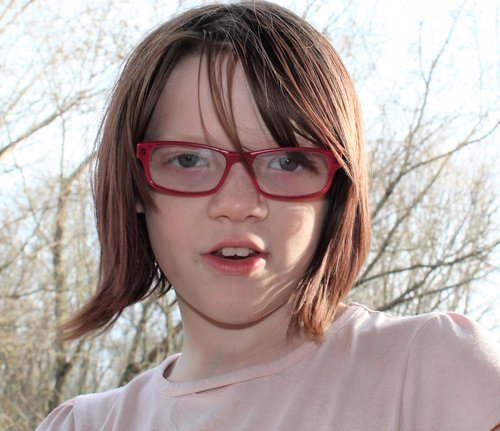
Cerebral insufficiency, although it occurs due to disorders of the nervous system, is not a death sentence for the child. He will be quite capable of studying, communicating, making a career and starting a family in the future. The only condition for this is timely treatment and the deep involvement of parents in this process.
This section was created to take care of those who need a qualified specialist, without disturbing the usual rhythm of their own lives.
What is RTSON?
Residual cerebral organic insufficiency (RCON or RCI) is the most common diagnosis after consultation with a pediatric neurologist. This term is used to refer to pathology that occurred antenatally, perinatally and in the first 2 years of life:
- antenatally and perinatally - as a consequence of partial placental abruption, severe prematurity, birth asphyxia and intracranial trauma;
- postnatally - sepsis, cerebral complications of infections, severe bruises and concussions.
RCSON is known to parents as PPCNS. To define organically caused nervousness that occurs later, a specific term like “residual effects of meningitis” is used.
Unlike neuropathy, which is significantly influenced by maternal stress during pregnancy, with residual organic pathology, the poor health of the mother and poor working conditions of the pregnant woman are reliably significant. Sedentary work, in which a pregnant woman does not receive sufficient oxygen for the formation of the fetus, the arteries feeding the fetus are pinched.
At work, the fetus experiences discomfort from loud sounds (for example, telephone calls or the noise of machines), from a disordered daily routine (when technical breaks are not observed, or a pregnant woman is forced to work extremely hard due to the unstable financial situation in the country (in low-paid work or work with "gray" salary). The risk of organic damage is also higher in women who give birth late. It can also be a hereditary pathology.
In the absence of treatment, these phenomena last throughout the entire period of brain maturation: up to 25 years in boys, up to 21 years in girls.
The general diagnosis of RCON includes:
- Asthenic syndrome. With this disease, the child gets tired quickly and comes home sluggish after school. Sometimes asthenic syndrome is expressed not by drowsiness, but by a headache, which goes away without taking medications after rest or sleep.
- Various tics or unnecessary movements. The child blinks or shrugs his shoulders, sniffs his nose, twitches the corner of his mouth. The movements resemble facial expressions, but they are not performed at the appropriate time.
- Vegetative manifestations. The diagnosis is made in the presence of weather dependence and motion sickness in transport; the child may also have wet or cold, sometimes “marbled” hands and feet.
- Increased intracranial pressure. If the diagnosis is made based only on clinical symptoms, it is necessary to conduct additional studies: do an echoencephalogram (M-Echo), an electroencephalogram (EEG) and look at the fundus. Based on the results obtained, the neurologist will prescribe a course of medications. Most often, this will be a comprehensive program of vasoactive drugs (regulate vascular tone and blood microcirculation in the brain), B vitamins and nootropics (improve thinking processes), and occasionally the prescription of diuretics is required.
In general, residual pathology occurs in 8.5% of children with neuroses, without noticeable differences in severity. Residual pathology and neuropathy are not related to each other and, rather, are mutually exclusive concepts. However, they can be combined, usually due to prematurity and the presence of several psychomotor disorders at the same time.
Children with diseases of the nervous system need help not only from a doctor, but also from parents and teachers.
Are there those who have had this diagnosis removed? When? How were you treated?
1. goes away after a complex of treatment,
2.passes and returns,
that's not fatal.

The most common diagnosis after consultation with a pediatric neurologist is residual cerebral organic failure (abbreviated RCON or RCN),
RCON is a residual effect from damage to the nervous system in infancy, which is known to parents as PPCNS. In the absence of treatment, these phenomena last throughout the entire period of brain maturation: up to 25 years in boys, up to 21 years in girls.
Increased intracranial pressure. If the diagnosis is made based only on clinical symptoms, we advise you to conduct additional studies: do an echoencephalogram (M-Echo), an electroencephalogram (EEG) and look at the fundus. Based on the results obtained, the neurologist will prescribe a course of medications.
: make an echoencephalogram (M-Echo), electroencephalogram (EEG)
Tell me who did it where.
. The diagnosis is made in the presence of weather dependence and motion sickness in transport; the child may also have wet or cold, sometimes “marbled” hands and feet.
I was told that many people who had PCNS after a year transform into RCN, immaturity of the nervous system in general
And it was. What to do.
Who was diagnosed with this?
we are watching and that's it
We are also being monitored and treated, but somehow with the fact that we have ZRR, I know what to do, and then I read too much), thank you, I calmed down a little.
All sections
Diagnosis of RCN in children: treatment methods
Residual brain failure can occur in 8% of children, regardless of gender. This pathology refers to neurotic diseases, which, depending on the severity, are subject to correction.
The diagnosis of RCN can only be made by a neurologist. This brain pathology can occur during intrauterine development, due to placental abruption, prematurity, birth injuries or asphyxia during birth. In a newborn child, this disease can develop due to infections that cause complications, due to various injuries and bruises to the head.
This pathology, which appears as a result of damage to the central nervous system, is expressed in excitability, hyperactivity and other neurological signs that indicate deviations in the child’s behavior.
Damage and failure of brain tissue depend on the location of brain damage and its intensity. It has been noted that the most extensive damage to the brain occurs at the time of its growth and development - during the period of intrauterine maturation and in infancy.
But the child’s brain is a flexible and developing system in which insufficient functions of damaged areas can be compensated by healthy areas of brain tissue. These areas often take over the functions of damaged brain structures. With large areas of brain damage, healthy areas cannot take on this function, as a result of which their functionality is suppressed and the child’s condition can only worsen.
If a child is diagnosed with RCN immediately after birth, parents need to closely monitor the development and behavior of the child, noticing any deviations in behavior and condition. This will help in further treatment and correction of the child’s behavior. Treatment of this pathology includes taking medications and corrective classes with parents, psychologists and neurologists, and teachers.
Pharmacological correction of deviations in each individual case is prescribed by neurologists after a thorough study of the child’s condition and behavioral characteristics. Also, to identify the location of brain damage, a number of studies are prescribed using special equipment. To treat residual cerebral insufficiency, a wide range of medications are used that help to activate and harmonize the functioning of damaged brain structures.
Also, the drugs used for treatment are intended to nourish nerve cells and increase metabolic processes in them. This approach allows you to increase the functional resource of nerve cells, which leads to improved mastery of skills and learning new ones. Also, this range of drugs helps to facilitate the child’s social adaptation.
Also, when diagnosing RCN in children, doctors prescribe a set of drugs that normalize blood circulation in the brain and help reduce intracranial pressure, if studies reveal that it is increased. This method of treatment also has a beneficial effect on the child’s condition and increases the functionality of nerve cells, which leads to improved and increased brain activity.
In special cases, also based on research results, the doctor prescribes sedatives to the child, which help correct behavior. In complex cases, when residual brain damage manifests itself in the form of seizures, anticonvulsant medications are prescribed to help stop the seizures.
The diagnosis of RCN is not a death sentence. Timely detection of pathology, competent comprehensive treatment, consisting of long-term use of medications and behavior correction, can improve the child’s condition.
Causes of the disease
Researchers of residual cerebral organic insufficiency argue that symptoms of the disease occur in the utero and perinatal period due to damage to the nervous system.
According to doctors, pregnant women over forty years of age are at risk. Although there are cases of babies being born with this pathology among younger women giving birth.
There are several reasons that provoke the development of this disease:
- placental abruption, resulting in cerebrovascular accidents and oxygen starvation;
- viral infection of the expectant mother, especially in the first trimester of pregnancy;
- psycho-emotional disorders during pregnancy (anxiety, stress and depression);
- unsuccessful termination of pregnancy;
- abuse of bad habits (alcohol, smoking, drug use);
- living in environmentally contaminated areas, inhaling radioactive substances;
- use of fortified medicines, dietary supplements;
- inactivity and passive way of life;
- oxygen starvation of the expectant mother during gestation;
- premature birth;
- physiological incompatibility of mother and fetus (Rh factor conflict);
- anesthesia during surgery or caesarean section;
- trauma during natural childbirth;
- injury to the baby after childbirth at home;
- infections of the perinatal period.
Symptoms
To determine the diagnosis, careful observation will be required, since the symptoms of the disease are similar to neuroses.
Residual disorders are associated with a complex of symptoms:
- increased intracranial pressure. This symptom is considered common for brain pathologies, so the use of instrumental methods (echoencephalogram, examination of the child’s fundus) will be required;
- asthenic syndrome, in which there is general weakness of the baby, fatigue and drowsiness;
- nervous twitching of the eyelids, lips and shoulders;
- digestive disorders;
- “marbled” appearance of the skin, increased level of sweating of the extremities;
- the body's reactions to weather changes. The child begins to be capricious or, conversely, become lethargic. At the same time, the pulse quickens, an abrupt increase in blood pressure is observed;
- pathologies in the functioning of the vestibular apparatus. The baby gets sick on rides in the park, riding in public transport;
- constant anxiety, excessive crying, frequent mood swings;
- negative reactions to light and loud sound;
- biopolarity of motor disorders. Such children may be lethargic, slow, slow to engage in any activity, and have difficulty concentrating. They are inactive at school, get tired quickly and require rest. In other cases, on the contrary, hyperactivity and impulsivity are observed. Such children are restless, excited and fussy at school.
The appearance of residual cerebral organic insufficiency is evidenced by external disturbances in the structure of the skull, jaw and teeth, ears, and widely spaced eyes.
After the birth of a child, you need to monitor the child’s development and record the following stages of development:
- period of independent head holding;
- turning over;
- the first smiles and the “humbling” stage.
During the first year of life, a child with this disease is recommended for massage, a set of gymnastic exercises, and hardening. If the disease is diagnosed early and timely treatment is applied, then it is quite possible to correct the child’s development and achieve positive recovery dynamics.
Due to the late identification of such a pathology, the following consequences are possible:
- speech and articulation development;
- speech rate from slow to fast;
- low school performance, dysgraphia or dyslexia (writing and reading);
- difficulties in establishing social contacts.
Neglect of treatment will lead to progression of the disease during the formation of brain activity. For men, this development is fixed at the age of twenty-five, for women - up to twenty years.
Further, in adults, against the background of residual cerebral organic insufficiency, various types of addictions (alcohol or drug abuse) develop.
Treatment
In the case of this disease, official medicine recommends using an integrated approach using medications, physiotherapy, gymnastic exercises and classes with a correctional pedagogy specialist (speech pathologist, speech therapist, psychologist). In addition, there are methods of herbal medicine, treatment with bee products, a specially developed diet and a program of biomedical correction of the body.
In general, the disease is curable, but women who decide to give birth after forty need to take into account the dangerous factors in the formation of the fetus and constantly be under medical supervision. In the event of the birth of a child with a birth injury, it is important for parents to be attentive to any deviations in the development of the baby and seek medical help for any deviations.
Symptoms
Residual cerebral organic failure
This term is used to refer to pathology that occurred antenatally, perinatally and in the first 2 years of life: antenatally and perinatally - as a consequence of partial placental abruption, severe prematurity, birth asphyxia and intracranial trauma; postnatally - sepsis, cerebral complications of infections, severe bruises and concussions. To define organically caused nervousness that occurs later, a specific term like “residual effects of meningitis” is used. In general, residual pathology occurs in 8.5% of children with neuroses, without noticeable differences by gender. Residual pathology and neuropathy are not related to each other and, rather, are mutually exclusive concepts. However, they can be combined, usually due to prematurity and the presence of several psychomotor disorders at the same time.
The significance of residual cerebral pathology in neuroses is to complement their clinical picture with cerebrasthenic syndrome and a more pronounced range of behavioral disorders, mainly increased excitability and hyperactivity. At the same time, there is no disinhibition and aggressiveness, which, along with the absence of guilt, would present a clinical picture of psychopathically altered behavior.
Unlike neuropathy, which is significantly influenced by maternal stress during pregnancy, with residual organic pathology, the undesirability of the birth of a child is reliably significant. They find out about pregnancy by accident, do not monitor it, and often try to terminate it. The risk of organic damage is also higher in late-parous women.
Dysontogenesis
The general patterns of mental dysontogenesis were revealed by V.V. Kovalev within the framework of the evolutionary-dynamic concept of child psychiatry he developed (Kovalev V.V., 1981). Dysontogenesis can affect various aspects of development, including puberty (Lebedinskaya K. S., 1973).
Models of disharmonious mental development are neuropathies and pathological personality development - anomalies of mental development, which are based on dysontogenesis of the emotional-volitional sphere (Lebedinsky V.V., 1985).
Manifestations of mental dysontogenesis such as disharmony in personality formation and partial developmental delay are considered mental risk factors of the first order and are found in 30% of the urban population of children (Kovalev V.V., Kozlovskaya G.V., 1980).
Dysontogenesis in neuroses is, first of all, a manifestation of uneven development and the rate of maturation of mental and physical functions. Occurring mainly in the first years of life, uneven development depends on the combined action of many factors.
The constitutional factor is the commonality of the pace of development with one of the parents or grandparents who, for example, also began to speak or walk a little later or earlier. The unevenness of development also depends on the pace of development of mental processes and the characteristics of the development of children’s temperament.
The development of temperament in children will be uneven if they have different, especially contrasting, temperaments of parents. At first, as observations show, the influence of the choleric (or phlegmatic) temperament of one of them may predominate, causing some acceleration (or slowdown) in the child’s mental development.
In the future, the phlegmatic (or choleric) temperament of the other parent is capable of somewhat slowing down (or speeding up) the pace of development, i.e., restoring it to the usual one characteristic of most children.
The pace of development may change again during adolescence, when some adolescents become more mobile, energetic, quick and excitable, while others become more slow and lethargic. Usually, only with the end of adolescence can we talk about an individually stable type of temperament.
According to the scale we developed—“advanced mental development in the first years of life”—there is a tendency toward higher scores than normal in children who subsequently develop neuroses. This is more noticeable in children with neurasthenia.
Another scale - “latency - slowdown of early development” - shows less severity compared to the norm. Thus, both scales independently confirm the presence of some advance in early development in children with neuroses.
“Developmental latency” is more common in children suffering from fear neurosis.
Indicators such as speech development, time to start walking, and height were studied separately. Early speech development is observed in 28% of boys and 34% of girls; according to age - in 57 and 56%; there is some lag - in 15 and 10%.
An advance in the time of the start of walking was detected in 38% of boys and 48% of girls; the beginning of walking per year - in 49 and 43%; there is some lag - in 13% of boys and 9% of girls.
27% of boys and 29% of girls are above average height: average - 64 and 56%; below average - 9 and 15%. Thus, according to the given indicators, the advance of development also prevails over its delay.
With advanced speech and general mental development, a relatively larger number of boys have a choleric temperament. With age-appropriate mental development, sanguine temperament comes first.
With a slowdown in mental development, the proportion of phlegmatic temperament increases, which, however, is not expressed more often than the sanguine one. In girls, such relationships are not noticeable.
Thus, in boys there is a more pronounced connection between the rate of mental development and temperament.
Temperament
In the classical version, temperament is a manifestation of the pace of mental processes (Strelyau Ya., 1982). The properties of temperament can also be defined as the energetic characteristics of mental properties (Merlin V.S., 1973). Temperament is subject to age-related changes, primarily associated with the process of maturation (Strelyau Ya., 1982).
The point of view of I.P. Pavlov on the predominance of extreme types of temperament in neuroses is known (Pavlov I.P., 1938). According to V.N.
Myasishchev, a state of anxiety and fear, anxious suspiciousness, touchiness and explosiveness, realized depending on temperament, cause reactions of an emotive nature, turning into a state of neurosis due to misunderstanding on the part of others (Myasishchev V.N., 1973). In the concept of V.I.
Garbuzov, the main pathogenic contradiction in neuroses lies in the discrepancy between environmental influence and the innate type of response - temperament (Garbuzov V.I., 1977). The latter is considered by V.I. Garbuzov in the dimensions of choleric, sanguine and phlegmatic temperament.
The melancholic temperament is combined with the phlegmatic one, since it is rare in childhood and represents more of a clinical variant than a normal variant. We also adhere to a similar opinion, since this also allows us to more evenly distribute temperament along the polar scale “choleric - sanguine - phlegmatic”.
We use the pace of mental and motor reactions as the leading criterion of temperament. Accordingly, a choleric person during an interview is defined as “quick, impetuous, speaks, thinks, does quickly”; phlegmatic - as “slow, unhurried, speaks, thinks, does slowly”; sanguine - as the average of two characteristics.
Data on the temperament of 119 children and adolescents with neuroses were obtained through interviews with parents and observations of children’s spontaneous activity in joint games.
The following distribution of choleric, sanguine and phlegmatic temperament was obtained: in boys it occurs in 29-39-32%, respectively; for girls - 17.5-50 - 32.5%. The absence of significant differences in the types of temperament among boys is noteworthy.
In girls, the sanguine temperament predominates more noticeably, followed by the phlegmatic one: the choleric temperament is the least pronounced.
Parents' assessment of the temperament of 90 children and adolescents with neuroses aged 7-15 years was compared with a similar assessment of 282 normal schoolchildren of the same age.
The severity of choleric temperament is the same in neuroses and in normal conditions; sanguine temperament is relatively more common, and phlegmatic temperament is less common in the norm.
A decrease in the number of children with a sanguine temperament and an increase in those with a phlegmatic temperament may be a known reflection of painful inhibition in children with neuroses.
Parents' assessment of their temperament does not show the predominance of its extreme types in mothers and fathers of children with neuroses.
Let's consider the contrast of temperaments between parents and children (choleric, on the one hand, and phlegmatic, on the other hand). Mothers are more likely to find their temperament and the boys’ temperament contrasting than fathers, at 35 and 20%, respectively.
In girls, on the contrary, fathers more often consider their temperament to be in contrast to theirs (44%) than mothers (21%). Consequently, a parent of the opposite sex to the child tends to show a contrast in temperament more often than a parent of the same sex.
With choleric temperament, excessive restrictions on the part of parents and other adults in the family have the greatest pathogenic effect. There is a sharpening of the excitability, activity and restlessness of these children, reminiscent of hyperactivity. “Lack of inhibitions,” excitability and restlessness manifest themselves mainly at home, in a traumatic environment.
Constant stimulation of children with a phlegmatic temperament has an inhibitory effect. They become inert and lethargic, slow and “muddy”. Choleric and phlegmatic temperaments, thus, turn out to be more sensitive to the costs of parental attitudes.
But the sanguine temperament is also vulnerable if it represents, as often happens in children with neuroses, an unstable age-related combination of extreme types of parental temperament. For example, a child's temperament may resemble in some ways the choleric temperament of one parent and the phlegmatic temperament of the other parent.
In this case, both excessive restrictions and excessive stimulation of children’s activity by parents will be pathogenically significant.
What is common in the situations considered is the failure of parents’ attempts to “correct” the natural temperament of their children - attempts that result in overexertion of their psychophysiological capabilities and neurosis.
Source: https://scibook.net/klinicheskaya-psihologiya-knigi/rezidualnaya-tserebralnaya-organicheskaya-19979.html
Causes of the disease
Researchers of residual cerebral organic insufficiency argue that symptoms of the disease occur in the utero and perinatal period due to damage to the nervous system.
According to doctors, pregnant women over forty years of age are at risk. Although there are cases of babies being born with this pathology among younger women giving birth.
There are several reasons that provoke the development of this disease:
- placental abruption, resulting in cerebrovascular accidents and oxygen starvation;
- viral infection of the expectant mother, especially in the first trimester of pregnancy;
- psycho-emotional disorders during pregnancy (anxiety, stress and depression);
- unsuccessful termination of pregnancy;
- abuse of bad habits (alcohol, smoking, drug use);
- living in environmentally contaminated areas, inhaling radioactive substances;
- use of fortified medicines, dietary supplements;
- inactivity and passive way of life;
- oxygen starvation of the expectant mother during gestation;
- premature birth;
- physiological incompatibility of mother and fetus (Rh factor conflict);
- anesthesia during surgery or caesarean section;
- trauma during natural childbirth;
- injury to the baby after childbirth at home;
- infections of the perinatal period.
Symptoms
To determine the diagnosis, careful observation will be required, since the symptoms of the disease are similar to neuroses.
Residual disorders are associated with a complex of symptoms:
- increased intracranial pressure. This symptom is considered common for brain pathologies, so the use of instrumental methods (echoencephalogram, examination of the child’s fundus) will be required;
- asthenic syndrome, in which there is general weakness of the baby, fatigue and drowsiness;
- nervous twitching of the eyelids, lips and shoulders;
- digestive disorders;
- “marbled” appearance of the skin, increased level of sweating of the extremities;
- the body's reactions to weather changes. The child begins to be capricious or, conversely, become lethargic. At the same time, the pulse quickens, an abrupt increase in blood pressure is observed;
- pathologies in the functioning of the vestibular apparatus. The baby gets sick on rides in the park, riding in public transport;
- constant anxiety, excessive crying, frequent mood swings;
- negative reactions to light and loud sound;
- biopolarity of motor disorders. Such children may be lethargic, slow, slow to engage in any activity, and have difficulty concentrating. They are inactive at school, get tired quickly and require rest. In other cases, on the contrary, hyperactivity and impulsivity are observed. Such children are restless, excited and fussy at school.
The appearance of residual cerebral organic insufficiency is evidenced by external disturbances in the structure of the skull, jaw and teeth, ears, and widely spaced eyes.
What is recommended
It is necessary to create social conditions in which the patient will feel as comfortable as possible. The following components must be included in the complex of rehabilitation measures:
- drug therapy;
- Exercise therapy (therapeutic physical culture);
- occupational therapy.
When diagnosing delayed complications of cerebral insufficiency, it is imperative to create living conditions in which the patient does not feel limited.
Rehabilitation in children is much easier and more effective due to their high level of regenerative processes and significant opportunities for neuroplasticity. Therefore, as a rule, they do not experience delayed complications.
